
The Technical University of Nova Scotia (TUNS) was a Canadian university located in Halifax, Nova Scotia.
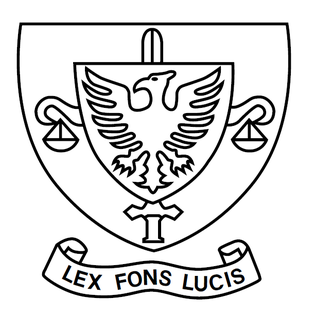
The Schulich School of Law is the law school of Dalhousie University in Halifax, Nova Scotia, Canada. Founded in 1883 as Dalhousie Law School, it is the oldest university-based common law school in Canada. It adopted its current name in October 2009 after receiving a $20-million endowment from Canadian businessman and philanthropist Seymour Schulich.

Digby is an incorporated town in southwestern Nova Scotia, Canada. It is in the historical county of Digby and a separate municipality from the Municipality of the District of Digby. The town is situated on the western shore of the Annapolis Basin near the entrance to the Digby Gut, which connects the basin to the Bay of Fundy.
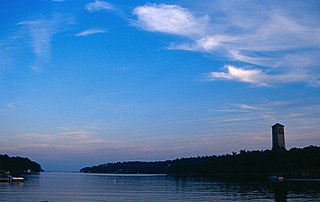
Sir Sandford Fleming Park is a 95-acre (38 ha) Canadian urban park located in the community of Jollimore in Halifax Regional Municipality. It is also known as Dingle Park or simply The Dingle, named after the town of Dingle in southwestern Ireland. The park was donated to the people of Halifax by Sir Sandford Fleming. The centrepiece of the park is an impressive tower that commemorates Nova Scotia's achievement of representative government in 1758. Constructed between 1908 and 1912, the Memorial Tower was erected during the same period of building other commemorative towers in the British Commonwealth, notably Cabot Tower in Bristol, England (1898) and Cabot Tower in St. John's (1900).
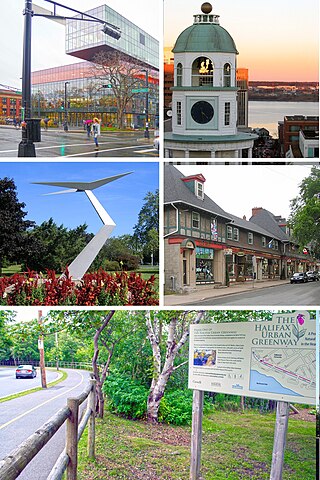
The Halifax Peninsula is a peninsula within the urban area of the Municipality of Halifax, Nova Scotia.

Province House in Halifax is where the Nova Scotia legislative assembly, known officially as the Nova Scotia House of Assembly, has met every year since 1819, making it the longest serving legislative building in Canada. The building is Canada's oldest house of government. Standing three storeys tall, the structure is considered one of the finest examples of Palladian architecture in North America.

Atlantic School of Theology (AST) is a Canadian public ecumenical university that provides graduate level theological education and undertakes research to assist students to prepare for Christian ministries and other forms of public leadership. It is located in Halifax, Nova Scotia, Canada, and its enrolment is approximately 160 degree and non-degree students. Persons of all religious traditions, or none, are welcome to study at AST.

The South End is a neighbourhood within Halifax's urban area, in the Municipality of Halifax, Nova Scotia, Canada.

Cole Harbour is a former village and current community located in Nova Scotia, Canada, that is part of the Halifax Regional Municipality.
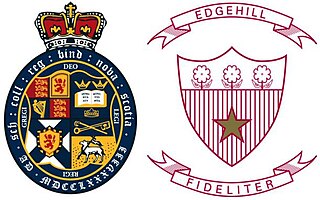
King's-Edgehill School is a Canadian private university-preparatory boarding and day school located in the town of Windsor, Nova Scotia. It is the oldest English independent school in the Commonwealth outside the United Kingdom, founded by United Empire Loyalists as King's Collegiate School in 1788, and granted Royal Charter by King George III in 1802.

The Diocese of Antigonish is a Latin Church ecclesiastical jurisdiction or diocese of the Catholic Church in Nova Scotia, Canada. Its current diocesan ordinary is Wayne Joseph Kirkpatrick.

The Maritime Conservatory of Performing Arts is a Canadian performing arts school in Halifax, Nova Scotia, that offers courses in higher education in music, dance, and theatre. It is the largest and the oldest (1887) of such organizations for education in the performing arts east of Montreal. The Conservatory has been located at the historic Chebucto School in West End, Halifax, since 1996.

The Faculty of Medicine at Dalhousie University, also known as Dalhousie Medical School, is a medical school and faculty of Dalhousie University in Halifax, Nova Scotia, Canada.

The Halifax Club is a private club in Halifax, Nova Scotia that was established in 1862. The club serves as a meeting place for business-minded men and women. It is a place where they can "meet, toast the day's successes, dine or simply relax in a warm atmosphere of history and tradition." The Club has a substantial art collection including a self-portrait of Benjamin West and a painting by Robert Field. The Club was built by George Lang.

The North British Society was founded in Halifax, Nova Scotia in 1768, the oldest Scottish heritage society outside Great Britain. North British is an adjective used as an alternative to "Scottish".

Cambridge Military Library is a library building in Royal Artillery Park in Halifax, Nova Scotia, Canada which was built in 1886. The building was created to house the garrison library collection, which had been moved from various locations in the city since its creation in 1817. It is the oldest non-university public library collection in Canada. This building was the social and literary centre of military Halifax. In 1902, the officers of the garrison requested the library be named after the Prince George, Duke of Cambridge.

The Halifax School for the Deaf was an institution in Halifax, Nova Scotia, Canada, which opened on 4 August 1856. It was the first school of the deaf in Atlantic Canada. There was later a dispute over who the true founder was, William Gray (1806-1881), a deaf Scottish immigrant who was the first teacher in the back room of a house in Argyle Street, or George Tait (1828-1904), another deaf Scot, who claimed to have been the driving force behind the establishment of the school. Gray was sacked in 1870 for being intoxicated and for threatening pupils with violence.
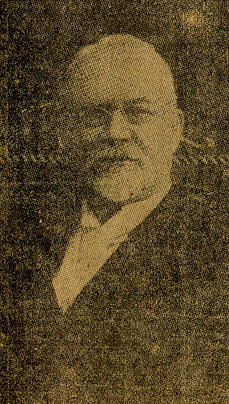
Sir Charles Frederick Fraser was the first superintendent (1873-1923) of the Halifax School for the Blind, the first residential school for the blind in Atlantic Canada. He became blind through an accident at age 7 and then went to study at Perkins School for the Blind in Boston. He was a member of the North British Society. He was knighted in 1915.

New Horizons Baptist Church is a Baptist church in Halifax, Nova Scotia that was established by Black Refugees in 1832. When the chapel was completed, black citizens of Halifax were reported to be proud because it was evidence that former slaves could establish their own institutions in Nova Scotia. Under the direction of Richard Preston, the church laid the foundation for social action to address the plight of Black Nova Scotians. It is affiliated with the Canadian Baptists of Atlantic Canada.

Gorsebrook Park is a 19-acre Canadian urban park located in the South End of Halifax, Nova Scotia.





















